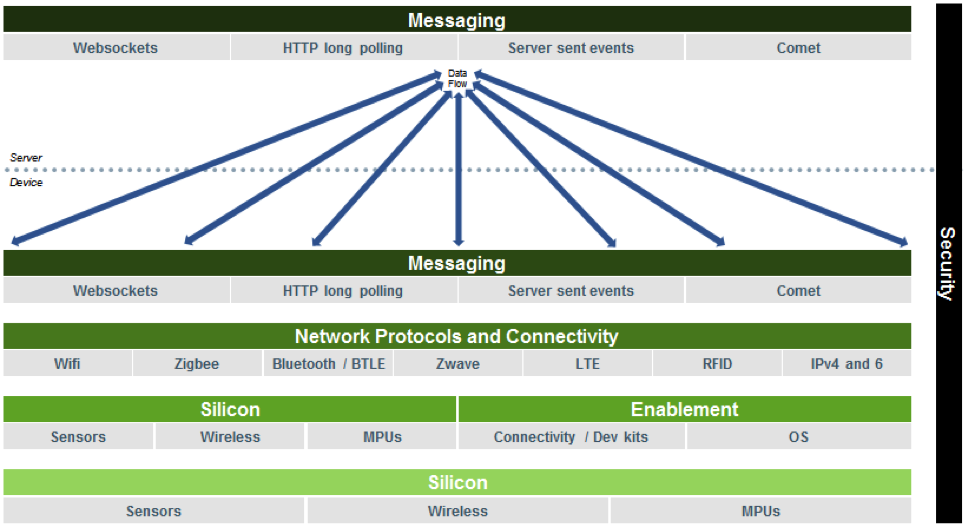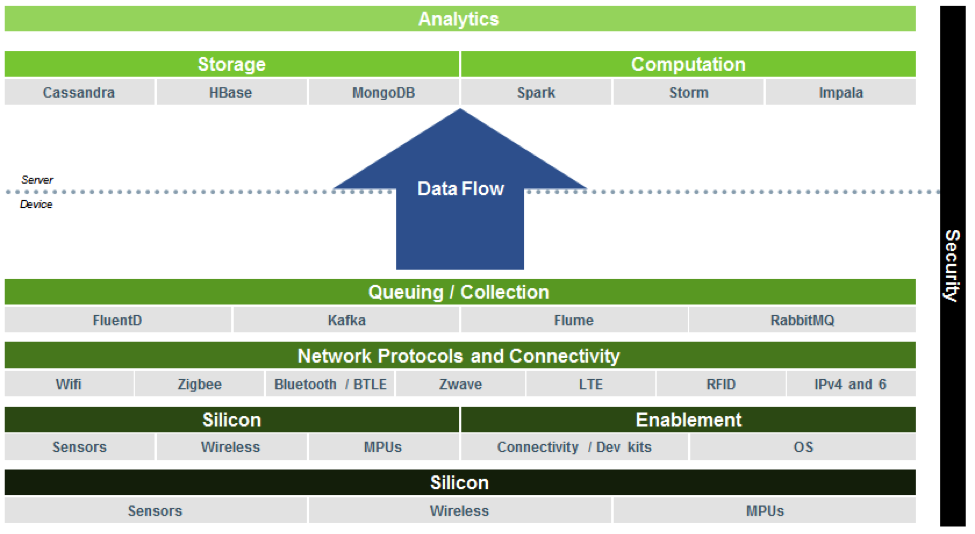It’s surprising to learn that, despite how inundated we’ve been with news of the Internet of Things over the past few years, the stack that’s powering so many of the applications and devices that have emerged remains nebulous. So nebulous in fact that PubNub’s recently-held IoT Stream Conference was dedicated to breaking down the confusion and clarifying the technology underlying IoT. Fresh with perspective from the conference panels at Stream and the exhibition halls at IoT World, we’ve decided to offer our own thoughts on the stack.
In its current state, IoT has two predominant use cases: control and analysis, each deserving of their own discrete stack.
Control

As the name implies, the control use case exists to govern a given set devices, sensors and things. Data flow in this use case is most often bi-directional and the controller-device count is finite; data flow therefore is generally of smaller scale. Consider the irrigation management system Sprinkl. Sprinkl embeds sensors (silicon) in soil to measure moisture and temperature and then relays that information via a low rate WPAN (network protocols and connectivity) to a control unit (silicon/enablement). The control unit uses that data to determine whether individual sprinklers should be watering on any given data at any given time. Simultaneously, the control unit uses 802.11 (network protocols and connectivity) and PubNub (messaging) to relay data from the control unit to Sprinkl’s cloud and the end user’s mobile device in real time. This allows the user to control and check the status of their system from their mobile devices as well.
Analysis

The analytics use case is dedicated to providing an understanding of what is happening across what is typically a vast sensor or device implementation. Data flow in this use case is often high volume and one-way, traveling from many sensors to one data store. Consider the Japanese automobile electronics manufacturer Pioneer. Pioneer builds OEM diagnostic sensors (silicon) to be embedded in automobiles in order to provide manufacturers, drivers, dealers and insurers with insights into service needs, navigation data, traffic data and incident information at massive scale. Pioneer gathers data from these on-board sensors and, using a wireless connectivity standard and FluentD (queuing and collection) streams it into a TreasureData data warehouse (data store). Pioneer can then query it or layer any of a variety of analytics tools on top of the data warehouse to determine which cars are prone to failure, what problems are covered by warranty or any of a variety of other insights.
As PubNub CEO Todd Greene mentioned in his recent article, the need for a single, codified stack is pressing. We couldn’t agree more; interoperability and security demand it. Indeed, as the technologies that serve each further develop and evolve, the lines between use cases will begin to blur and a single stack will emerge at scale. Until that time however, the stack duopoly will continue to predominate.
ScaleVP Associate, Gregory Silva, co-authored this post.